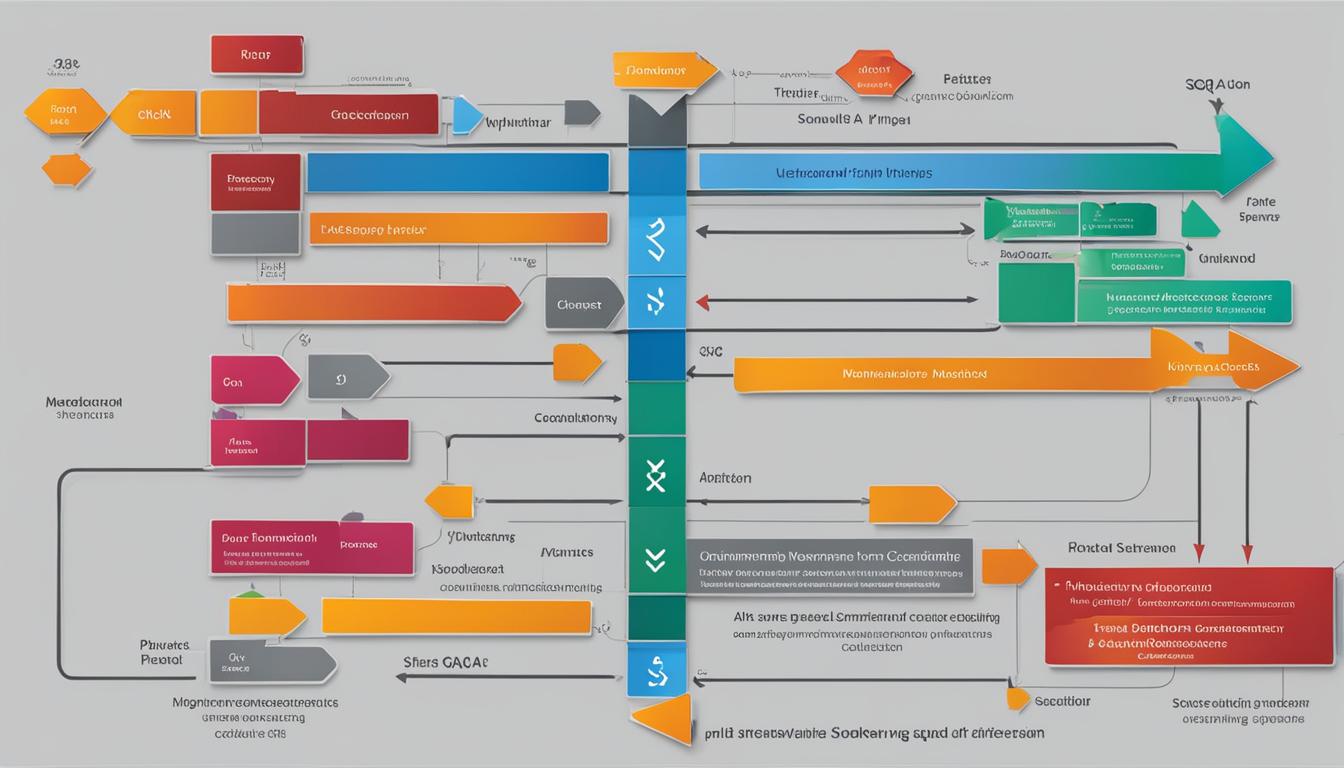To guarantee quality in microservices, you should adopt thorough testing strategies like API mocking and continuous testing. Mocking simulates dependent services, making your tests more reliable and repeatable. Continuous testing helps catch issues early as your services evolve, boosting stability and faster releases. Designing independent tests that simulate different scenarios reduces complexity and uncovers hidden bugs. Mastering these approaches will strengthen your microservices’ reliability—keep exploring to learn more effective testing techniques.
Key Takeaways
- Implement API mocking to simulate dependent services, enabling isolated and consistent testing environments.
- Adopt continuous testing practices to detect integration issues early and ensure ongoing system quality.
- Design tests to be independent and repeatable, covering various scenarios, including edge cases and failures.
- Use API mocking to manage microservice complexity, facilitating testing without full service deployment.
- Regularly update mock responses and automate tests to maintain reliability, speed, and high-quality system releases.

Microservices architecture offers significant flexibility and scalability, but it also introduces complexity when it comes to testing. With multiple independent services communicating over APIs, guaranteeing each component works correctly within the larger system can be challenging. This is where API mocking becomes essential. By simulating the behavior of dependent services, API mocking allows you to test individual microservices in isolation, reducing dependencies on the actual services and making tests more reliable and faster. Instead of waiting for real services to be available or dealing with unpredictable network issues, you can create controlled, repeatable test environments that mimic real interactions. This approach helps catch bugs early, guarantees consistent results, and accelerates development cycles. As you implement API mocking, it’s important to keep your mock responses updated to reflect changes in the actual APIs, guaranteeing your tests stay relevant and accurate. Additionally, understanding the role of API mocking in testing can help optimize your testing strategy and improve overall system reliability.
Continuous testing plays a vital role in maintaining quality throughout the development lifecycle. It involves running automated tests frequently—often with every code change—to detect issues as soon as they arise. When testing microservices, continuous testing helps you identify integration problems early, especially since different services may evolve at different paces. Integrating automated tests into your CI/CD pipeline ensures that each build is validated thoroughly before deployment. This process minimizes the risk of bugs slipping into production and boosts confidence in your system’s stability. To maximize effectiveness, combine continuous testing with API mocking, enabling you to quickly test service interactions without waiting for all services to be fully deployed or available. This synergy allows for rapid feedback, faster iterations, and more reliable releases.
Another key aspect is designing your tests to be independent and repeatable. Microservices can be complex, with many moving parts, so your testing strategy should focus on isolating components whenever possible. Use API mocking to simulate different scenarios, including edge cases and failure conditions, so you can verify how each service responds under various circumstances. This approach not only improves coverage but also helps uncover issues related to service communication, data handling, and error management. Additionally, embedding automated testing into your development process means that you’re continuously validating your codebase, reducing technical debt, and maintaining high quality standards. Ultimately, combining API mocking with continuous testing empowers you to manage the inherent complexity of microservices, guaranteeing that your system remains robust, scalable, and reliable as it evolves.
Frequently Asked Questions
How Do I Prioritize Testing Types in a Microservices Environment?
You should prioritize testing types based on service dependencies and testing coverage. Start with unit tests to guarantee individual components work correctly, then focus on integration tests to validate interactions between services. Next, perform end-to-end tests to simulate real user scenarios. By analyzing service dependencies, you can identify critical areas needing more coverage, ensuring your microservices are reliable and resilient. Balance testing efforts to maximize quality efficiently.
What Tools Are Best for Automated Microservices Testing?
Did you know that 80% of organizations find automation essential for microservices testing? For automated testing, tools like Postman and Pact excel by supporting contract testing, ensuring service interactions are reliable. Service virtualization tools like WireMock or Hoverfly allow you to mimic microservices, enabling thorough testing without dependencies. These tools streamline your testing process, improve accuracy, and help catch issues early, making your microservices more resilient and scalable.
How Can I Test Microservices in a Ci/Cd Pipeline Effectively?
To test microservices effectively in a CI/CD pipeline, you should incorporate service virtualization to simulate dependencies and make certain of consistent testing environments. Use contract testing to verify that services communicate correctly before deployment. Automate your tests to run on each build, catching issues early. Combining service virtualization and contract testing streamlines your pipeline, reduces failures, and guarantees your microservices work seamlessly together before going live.
What Are Common Challenges in Microservices Testing?
Imagine steering a maze filled with shifting walls—that’s what testing microservices can feel like. Service dependencies make it tricky to isolate components, while environment variability causes inconsistent results. You might find some tests passing in one setup but failing in another. These challenges require careful planning, mock services, and environment controls. Without these, ensuring reliable, consistent microservices testing becomes a complex, often frustrating journey.
How Do I Handle Data Consistency Across Microservices During Testing?
To handle data consistency across microservices during testing, focus on data synchronization and consistency verification. You should implement tests that simulate real-world transactions, ensuring data updates propagate correctly between services. Use techniques like distributed transactions or eventual consistency checks. Regularly verify data integrity by comparing datasets across services, and automate these checks to catch discrepancies early, ensuring your microservices maintain reliable, synchronized data throughout the testing process.
Conclusion
By adopting thorough testing strategies, you guarantee your microservices remain reliable and maintainable. Remember, a chain is only as strong as its weakest link, so don’t overlook testing at any level. Continuously integrate testing into your development process, and you’ll catch issues early, saving time and resources. Ultimately, “A stitch in time saves nine,” highlighting the importance of proactive testing to keep your microservices healthy and your users happy.









